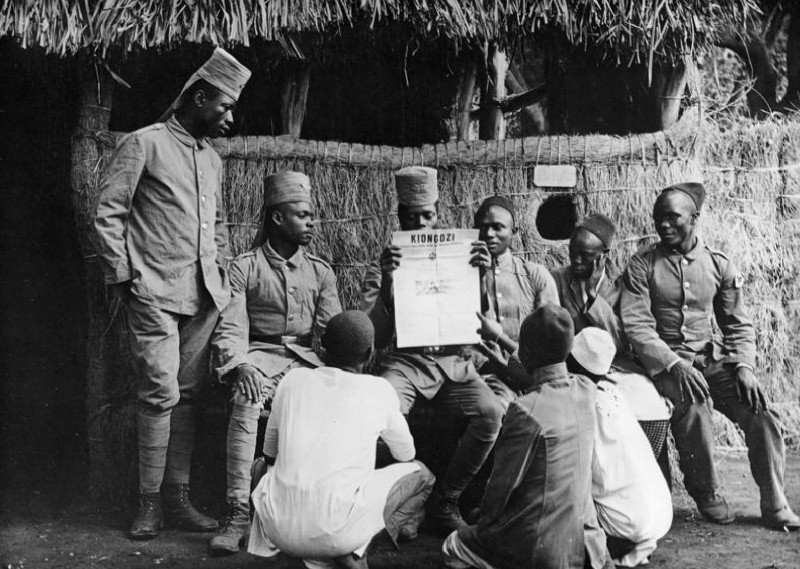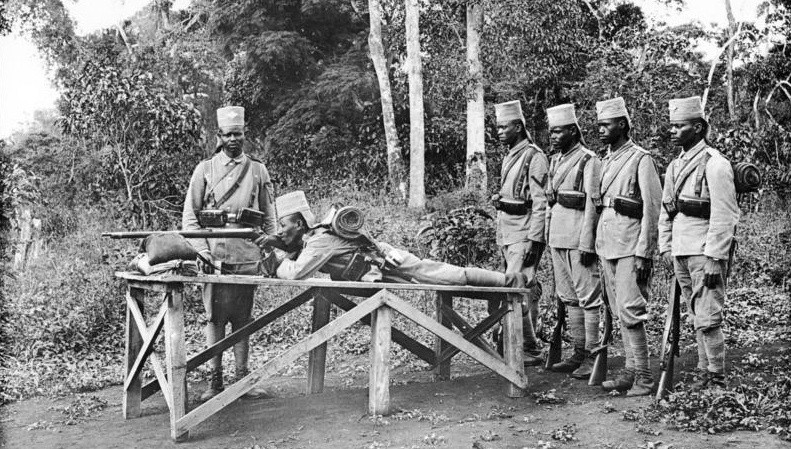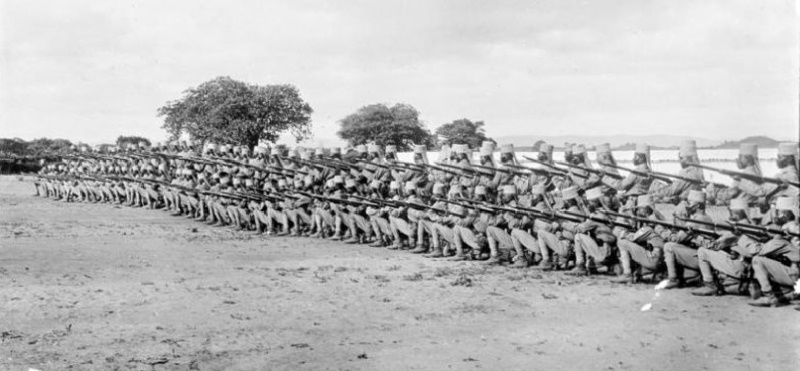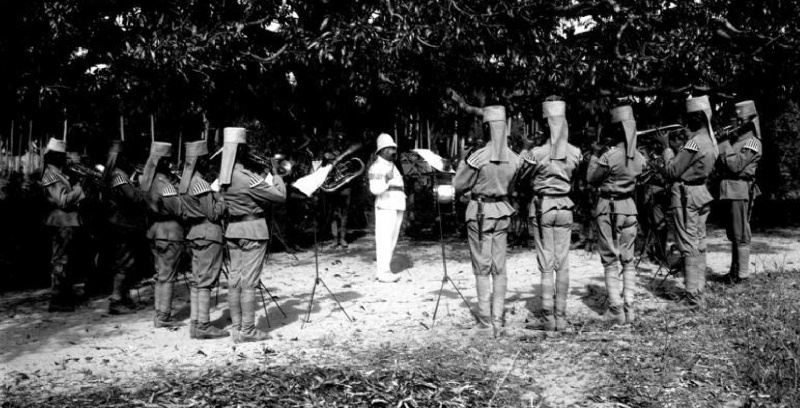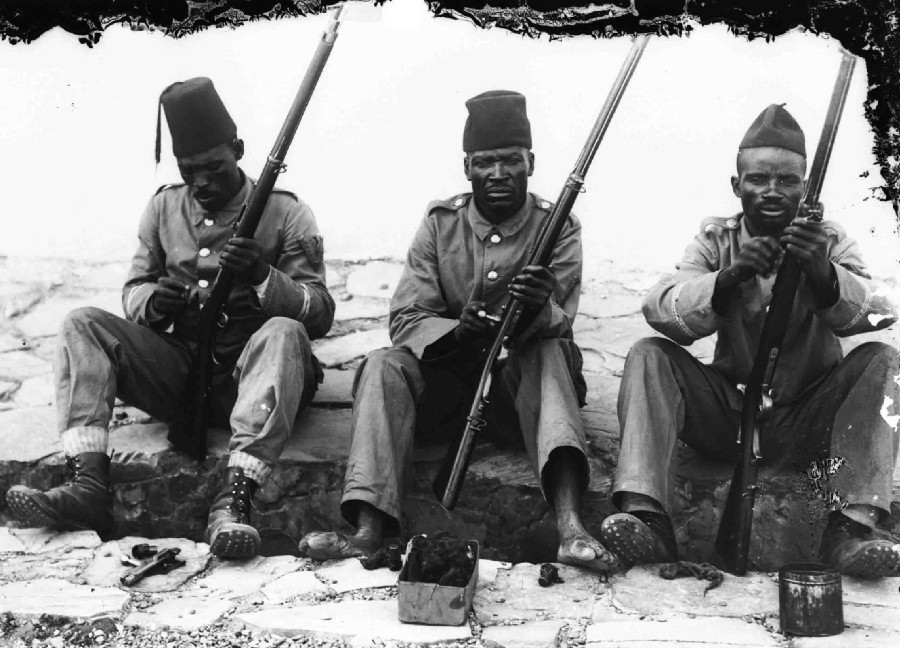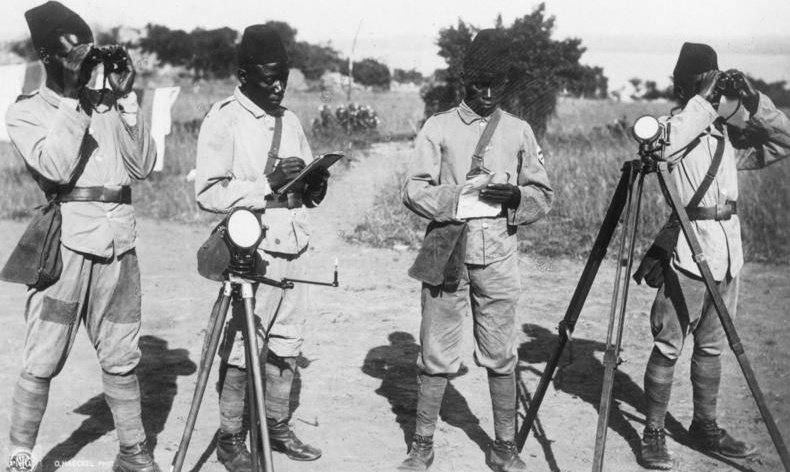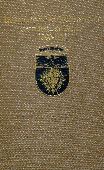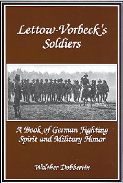Rank Insignia Figure A shows the insignia worn by an askari Ombascha (or Gefreiter). The insignia consisted of a single red chevron worn on the upper left arm. Figure B shows the insignia worn by an askari Schausch (or Unteroffizier). The insignia consisted of two red chevrons worn on the upper left arm. Figure C shows the insignia worn by an askari Bet-Schausch (or Sergeant). The insignia consisted of three red chevrons worn on the upper left arm.Figure D shows the insignia worn by an askari Sol (or Feldwebel). The insignia consisted of four red chevrons worn on the upper left arm. Figure E shows the insignia worn by an askari Effendi (or Officer). The insignia consisted of three five-pointed white metal stars worn on each shoulder strap of a German officers uniform worn without the blue piping (see Effendi Uniforms). Specialist Insignia Figure F shows the insignia worn by an
askari Music Player. Askari musicians were divided into two grades- Musician ("Musiker")
and Player ("Spielmann"). The higher ranking musicians wore swallows nests with
a red base colour with eight vertical stripes underlined by one
horizontal stripe in white. The lower ranking players wore
swallows nests with a khaki base with eight vertical stripes underlined by one
horizontal stripe in red as seen here. Figure G shows the insignia
worn by an askari Medic and Musician of the German East
African Schutztruppe. The Medic's insignia consisted of a red cross on a circular white patch
worn on the upper left arm. Not all
askari medics and stretcher bearers wore this insignia. Some simply wore a red
cross on a white armband which was the common distinction worn by most medics and
stretcher bearers in Germany's home and overseas forces. In this case the askari
also wears the shoulder swallows nest insignia of an askari musician. As
described above the musicians wore swallows nests with a red base colour with
eight vertical stripes underlined by one horizontal stripe in white. Figure H shows the insignia
worn by an askari of the Signals Abteilung of the German East
African Schutztruppe. The insignia consisted of a red pair of
crossed flags on a white vertical oval patch worn on the upper left arm. Aside
from this insignia the Signals Abteilung wore standard askari uniforms. One
period photograph (from
"In Wehr
und Waffen" seen on the
Uniforms of the World Forum) shows
them wearing round spectacles with dark lenses, to protect their eyes from the
glare of heliograph flashes. Figure I shows the insignia worn by an askari Artillery Gunner and Marksman of the German East African Schutztruppe. The gunner's insignia consisted of a red flaming grenade motif with flames emitting from the top and both sides on a white horizontal oval patch worn on the upper left arm. I have yet to ascertain for certain but this insignia may have been exclusive to askari gun layers rather than all gunners. The askari marksmanship award consisted of stripes of white lace with black and red threads worn on both lower arms.
The first class had a single bar of lace. The grades of marksmanship award may
have gone higher than the sixth class, but as yet I've seen no confirmation of
this. Photographs often show marksmanship and gunner awards on the same askaris
so it is reasonable to assume gunners were picked from the best marksmen. Figure J shows the insignia
worn by an askari of the Polizeitruppe. The insignia
consisted of a red letter "P" on a white vertical oval patch worn on the upper
left arm (see the East African Polizeitruppe
Page). This Polizei-Askari also wears the single red rank chevron of an Ombascha or lance
corporal.
|
||||||||||||||||||||||||||||||||||||||||||||||||||||||||||||||||||||||||||||||||||||||||||||||||||||||||||||||||||||||||||||||||||||||||


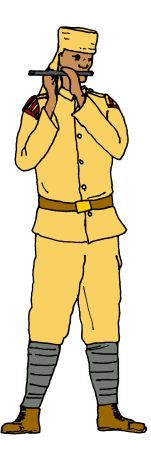


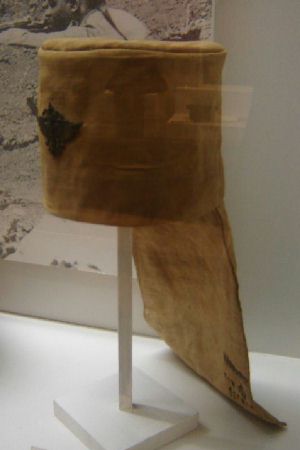
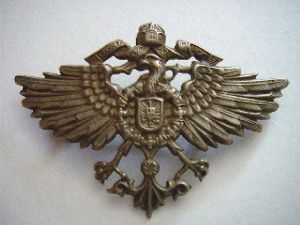
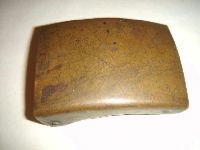
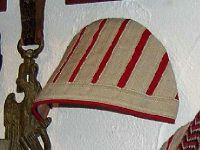
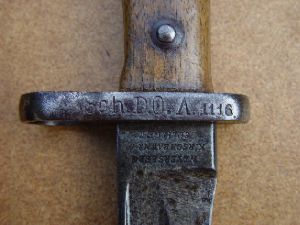
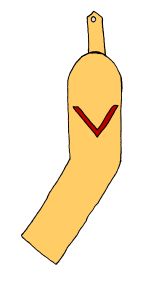
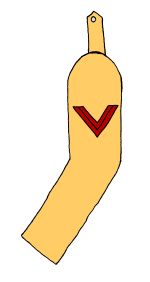
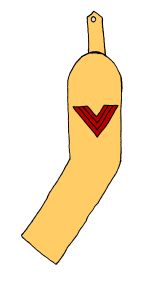
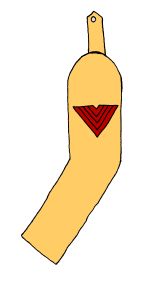
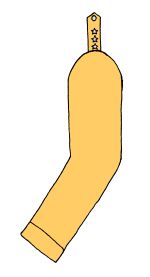
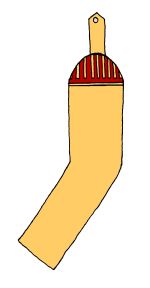
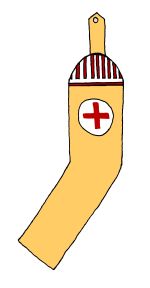
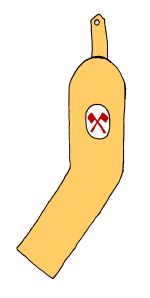
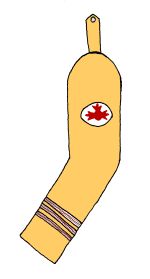
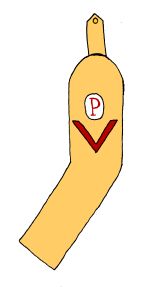
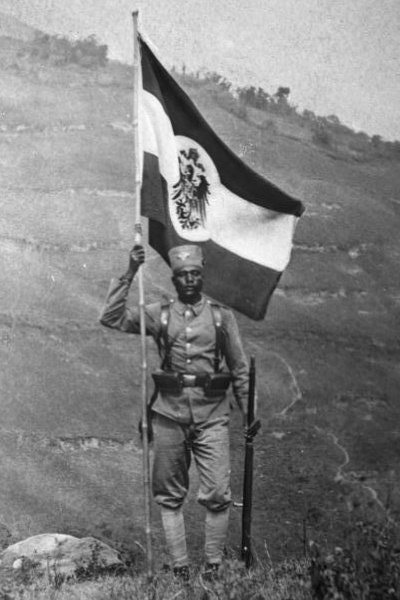
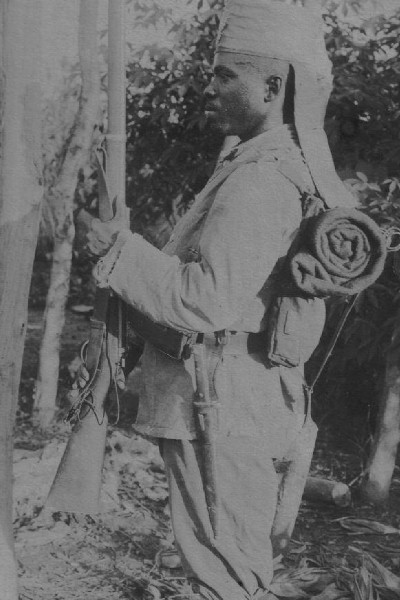
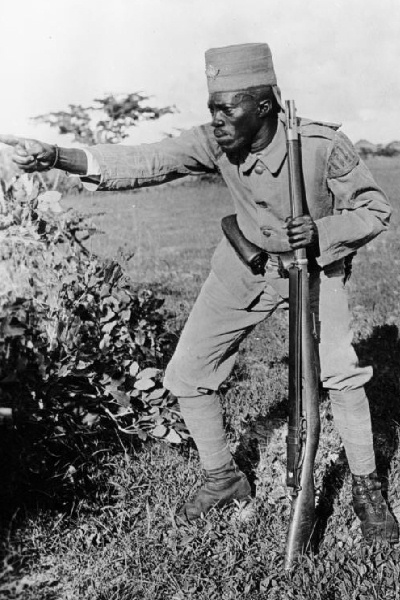
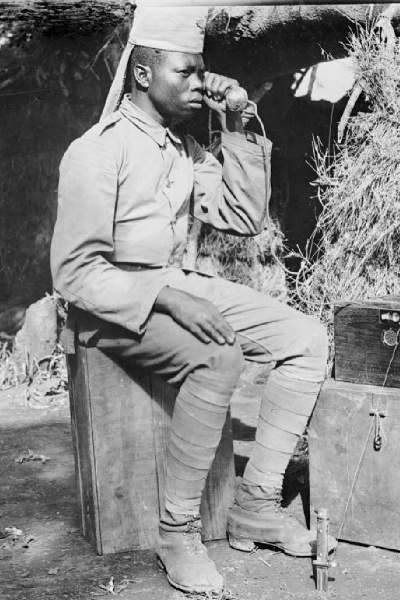
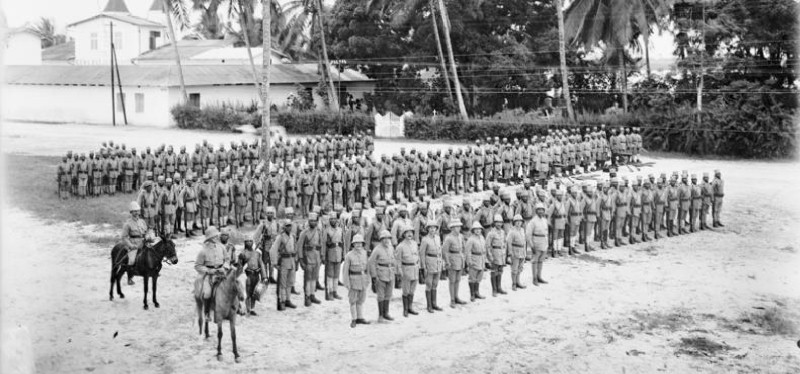 A
A Schutztruppe Feldkompagnie up to
full strength on parade with their German officers and NCOs.
Note the machine gun crew to the upper right of the photograph.
A
A Schutztruppe Feldkompagnie up to
full strength on parade with their German officers and NCOs.
Note the machine gun crew to the upper right of the photograph.